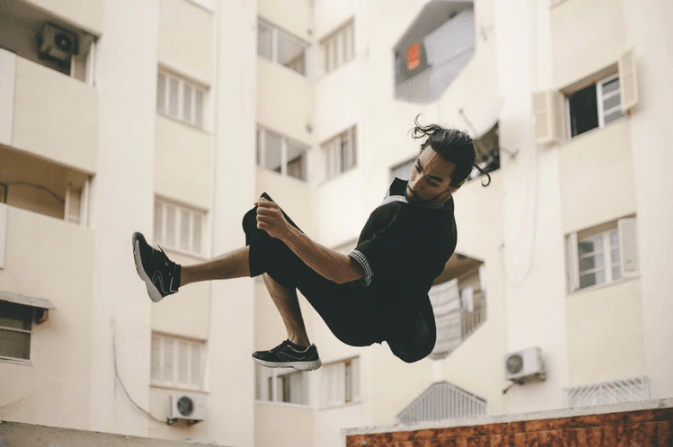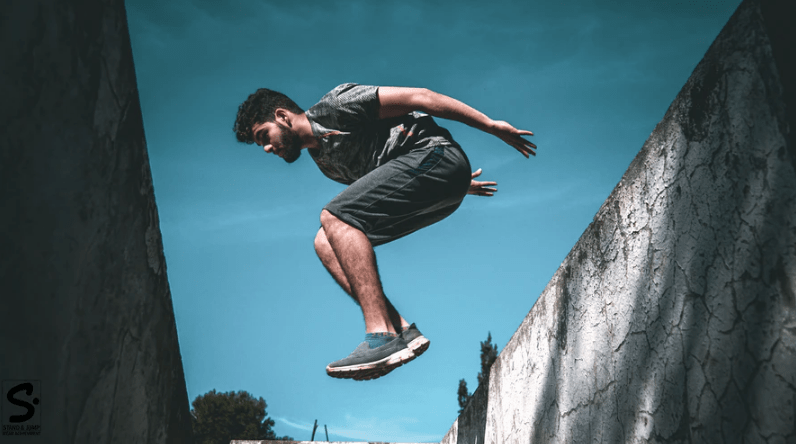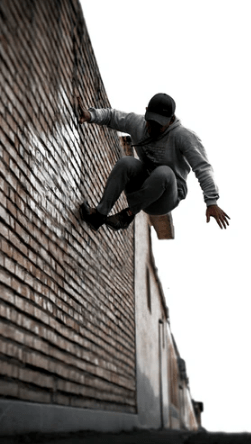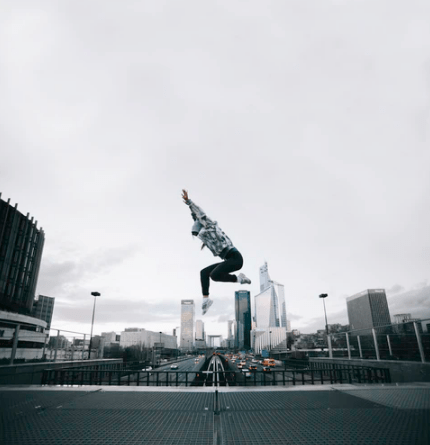When watching action movies, have you ever seen an exciting chase scene where the character leaped over obstacles easily? While those kinds of scenes, such as leaping over obstacles and buildings, in movies are staged, there are actually people who can do those things in real life. Yes, and it is called parkour.
Parkour is a non-competitive sport that includes efficient movement around obstacles. People who participate in it are called traceurs for males and traceuses for females. They move through an environment like city streets by running, climbing, rolling, vaulting, jumping, and other movements in order to travel from one point to another quickly without using any equipment. If you’d like to learn more about it, read on as we’re giving you more information about parkour.
History of Parkour
It was in the late 1980s when the discipline was developed in France. It was later on popularized through internet videos, documentary and feature films, and as well as television commercials. One of the most prominent movies that involve parkour is the James Bond movie Casino Royal in 2006.
According to writers on parkour, its origins can be traced back to the physical education and training methods that were developed starting in the years before the First World War by Georges Herbert. These methods were known as “la methode naturelle.” The routine involved training in jumping, running, balancing, climbing, swimming, and as well as defending and using obstacle courses that were called “parcours du combatant.” This system came to support French military training.
During the 1940s to the 1950s, Raymond Belle received instruction on Herbert’s methods while he was in the military. He later used those training methods to become a top firefighter. He was popular for his acrobatic athleticism and ability to quickly and safely move along ledges, scale buildings without ladders, and leap between the rooftops of buildings. His son named David Belle is credited as the father of parkour.
David, along with his father, trained. Later on, he and a group of friends started practicing parkour on their own. They added their own challenges and movements and called their group the Yamakasi. By the late 1990s, their group was giving public performances. However, with their increasing popularity, Belle and another leading member of their group named Sebastien Foucan started to disagree about the direction that the new discipline should take. With this, both of them left the group. Later on, Foucan introduced a new movement in Britain called freerunning.
Parkour became popular in many other countries. National and local organizations were formed, which are usually for the purpose of giving training and education. There are some theorists who opposed the idea of competition in parkour. However, international organizations such as World Freerunning Parkour Federation, Federation Internationale des Arts du Deplacement, and Movement International du Parkour Freerunning et l’Art du Deplacement were established. And each of them aimed at making a structure for parkour competitions worldwide. Britain became the first-ever country to recognize parkour as a sport in 2016.
What are the Movements in Parkour?
There is actually no official list of moves in parkour. However, the style in which the practitioners move usually sets them apart from others. There are also several named movements that are involved when practicing parkour. Here are some of them:
- Rolling: In parkour, practitioners roll to absorb impacts from larger drops. They move diagonally over a shoulder, converting momentum from vertical to horizontal.
- Precision Jumping: Parkour practitioners are able to jump and land accurately with their feet on small and narrow obstacles.
- Arm Jumping: This is when they jump and land feet-first on a vertical surface and catch the horizontal top using their hands.
- Wall Running: This is when parkour practitioners run toward a high wall and then jump and push off the wall using their feet to reach the top of the wall.
- Climbing Up: This is moving from a position hanging from a ledge to standing on the top or leaping over to the other side.
What is the Equipment Used in Parkour?
Parkour is known to be a sport that does not need any kind of equipment. However, items like walls, bars, and boxes are often used when practicing. Parkour practitioners usually wear lightweight and non-restrictive casual clothes when training. It is also rare to see traceurs who wear gloves because bare hands are better for grasp and concrete feedback.
It is also encouraged to wear running shoes that have good grip and flexibility for more natural and smooth movements. Most practitioners of parkour use minimalist shoes for better sensitivity and balance. But others prefer wearing shoes with more cushioning for better shock absorption, especially from large jumps. There are also some who train barefoot for movement competency without gear. At the present time, there are many training-shoe manufacturers that offer shoes specifically for parkour.
What are the Risks of Parkour?
Like other sports, parkour also comes with a few risks. Here are some of them:
Trespassing
Since parkour is not usually practiced in dedicated public spaces or facilities, practitioners are at risk of trespassing. There are efforts being made to create a dedicated space for it, but many traceurs do not like the idea as it is opposing to the values of adaptation, creativity, and freedom of the sport.
The sport is practiced in both rural and urban areas, like parks, playgrounds, offices, gyms, and even abandoned structures. With this, concerns have been raised concerning trespassing, damage of property, and as well as the use of inappropriate places like cemeteries. This is why a lot of parkour organizations around the world are supporting the Leave No Trace initiative to promote safety and respect for the spaces being used.
Injuries and Death
There were concerns being raised by law enforcement and fire rescue teams about the risks that come with jumping off high buildings. According to them, parkour practitioners are pointlessly risking damage to both themselves and rooftops by practicing at height. With this, they are calling for practitioners to stay off the rooftops. In fact, some practitioners of parkour agree to this and that it should be discouraged.
The philosophy behind the practice of parkour is to learn how to control oneself in interaction with the environment. Therefore, many parkour experts consider serious injury as evidence of failure to follow the principles of the sport, specifically knowing their limitations.
Conclusion
Parkour is definitely an unusual but amazing sport. It is something that requires a lot of practice in order to master and perfect the movements. It is also true that it can be dangerous, especially when practiced in places that are too high. Therefore, if you wish to become a parkour practitioner, you should ensure that you stick to its principles and know your limitations to avoid accidents and other unwanted events.
We hope that you learned more about parkour in this article. If you are searching for more unique sports to read about, you can check out our list of the Unusual Sports You’ve Probably Never Heard Of.




